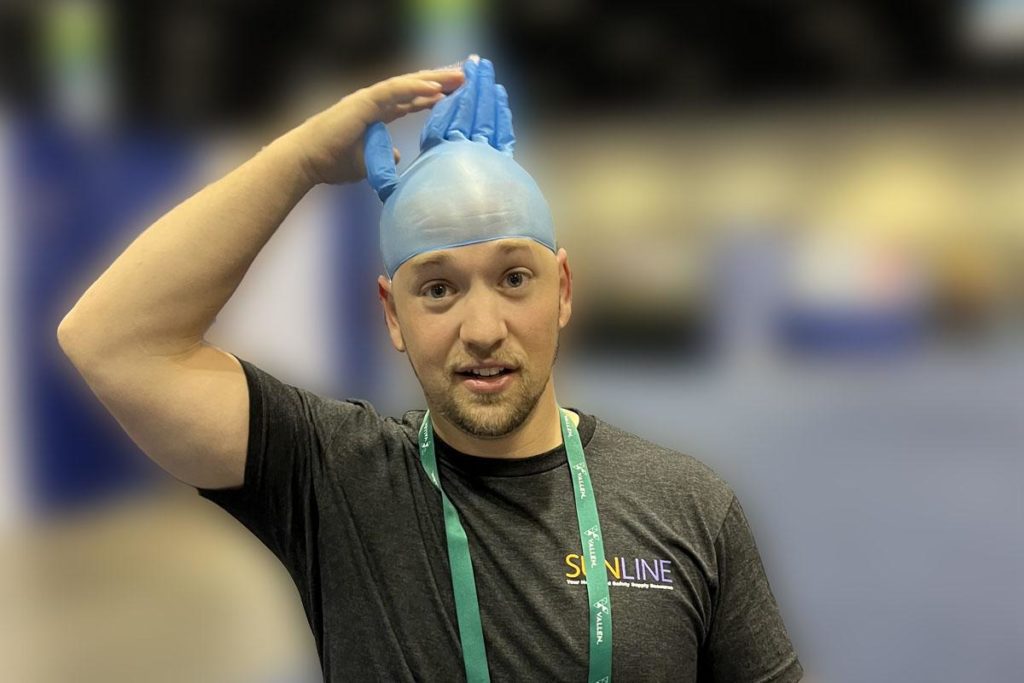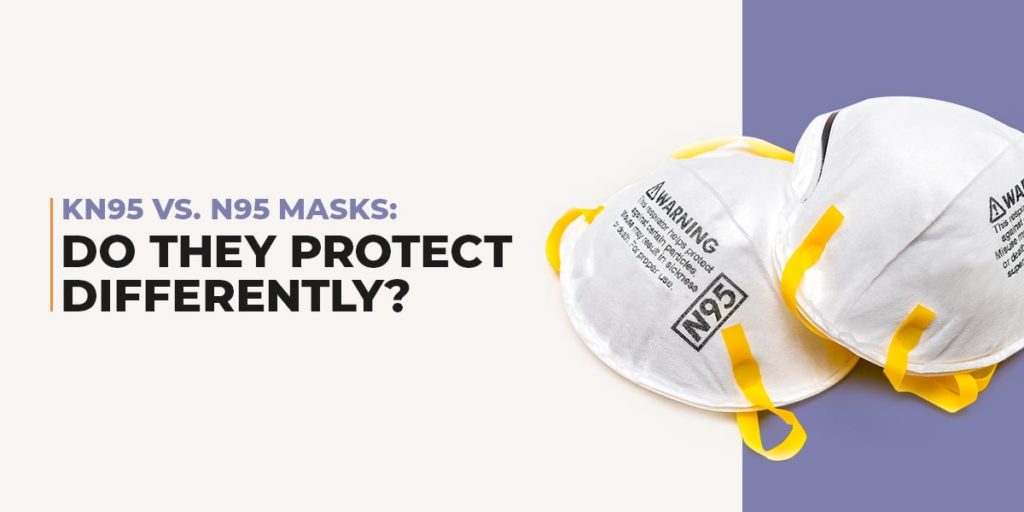
KN95 vs. N95 Masks: Do They Protect Differently?
Masks are one of our greatest assets in the fight to slow the spread of airborne infectious diseases. It’s surprising just how much a layer of fabric can do to increase public health and safety and create safe workspaces. In the last year, N95s have become ubiquitous throughout healthcare environments. However, they’re also a popular type of personal protective equipment (PPE) in various occupations where airborne particles can be a threat, such as construction sites with dust and other particulates.
You may have also seen a similar-sounding product — the KN95. But what is it? Does a KN95 work the same way, and is it approved for the same uses as the N95? While similar, these two masks have some critical yet subtle differences. Let’s take a closer look at KN95 and N95 respirator masks.
How Are KN95 and N95 Masks Similar?
Both masks are one-time use disposable filtering facepiece respirators (FFRs). An FFR is a negative pressure particulate respirator with a facepiece made up of the filtering medium or a filter as an integral part of the facepiece. The “95” in their titles refers to the percentage of particles they can filter out — 95%. The “N” refers to non-oil, meaning neither mask will protect against oils. In short, they’re both face masks that filter at least 95% of particles and won’t resist oils.
The two masks are alike in their other specifications, featuring similar flow rates and breathability — though the N95 is slightly stricter in breathability requirements. They both have a flow rate of 85 liters per minute and are rated to capture particles over 0.3 microns in size. Both are tested with the same agent, sodium chloride, as well.
If you happen to know that the COVID-19 virus has a diameter of 0.06 to 1.4 microns, you might wonder how the masks can block it and other small particles like the influenza virus. Due to a concept called Brownian motion — the zigzagging, pinball-like pattern that small particles move in — these masks are effective on particles of numerous sizes. With the same ratings, KN95s and N95s offer exceptional protection from both small and large particles and are approved for use against COVID-19.
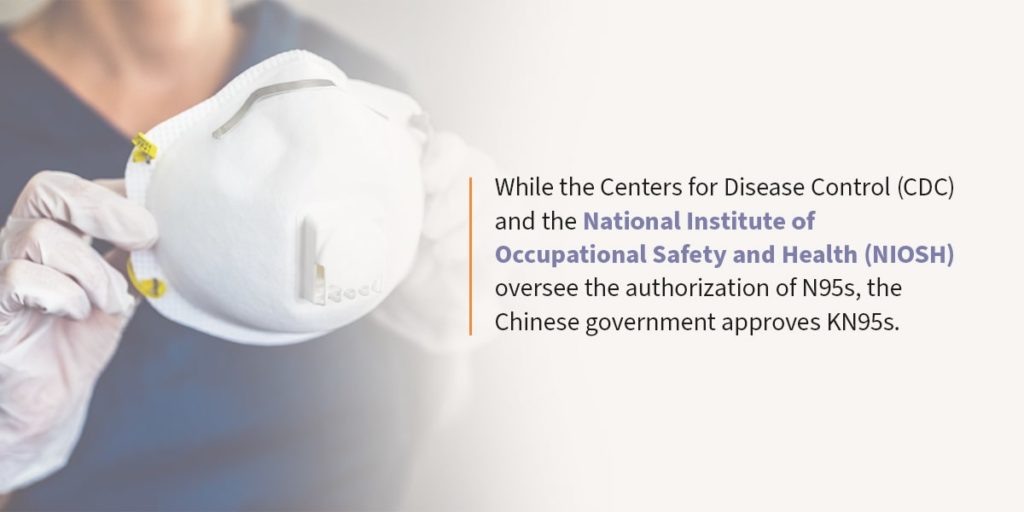
The Major Difference Between KN95 and N95 Masks
KN95s and N95s differ primarily in their certifications. While the Centers for Disease Control (CDC) and the National Institute of Occupational Safety and Health (NIOSH) oversee the authorization of N95s, the Chinese government approves KN95s. That means their testing requirements differ slightly. Aside from that, the two are considered equivalent for the most part. Their differences are very minute and won’t be noticed by the everyday user but include inhalation and exhalation resistance and leakage measurements.
Of course, China and the U.S. aren’t the only countries with differing mask regulations and designs. Remarkably similar masks will go by different names in various countries, such as the P2 in Australia, New Zealand and Brazil and the FFP2 in Europe. Most are so similar, in fact, that the FDA issued a quick emergency use authorization for these masks when N95s came into short supply during the COVID-19 pandemic — but more on that later.
While almost all of these “equivalent” masks will filter 94% to 95% of particles, different countries use different testing metrics, such as the agent used, force applied, CO2 clearance requirement and inhalation/exhalation resistance. For example, Europe and Korea use sodium chloride and paraffin oil as their test agents, while the U.S. and China only use sodium chloride.
How Are N95 Masks Certified in the US?
Mask certification involves a few different agencies. In most applications, users need masks that abide by standards from the Occupational Safety and Health Administration (OSHA). OSHA compliance often calls for NIOSH-approved respirators. NIOSH is a division of the CDC and covers 10 classes of respirators, which come in the form of elastomeric respirators and FFRs. Elastomeric respirators are reusable full or half facepieces with replaceable cartridges or filters.
The U.S. Food and Drug Administration (FDA) is also involved in regulating some masks, but not the standard N95s. They have no part in non-medical masks. Surgical N95 respirators are considered a Class II medical device and are also certified by NIOSH. It’s worth noting there are some important distinctions to make between surgical masks, standard N95 masks and surgical N95 masks because they all differ slightly:
- Surgical, medical or procedure masks: These masks are very common, usually with a blue tint, earloops and a loose-fitting design. They’re overseen by the FDA and intended to both prevent the wearer from spreading contaminants and protect them from droplets, sprays and splashes of bodily fluids, such as in a surgical environment. These masks don’t have a face seal and don’t effectively filter small particles. They’re still helpful against COVID-19 because they prevent the virus from latching onto large droplets. Surgical masks are intended for single-use or one-patient encounters.
- N95 respirators: Standard N95 respirators are approved by NIOSH, offering effective particle and droplet protection and breathing resistance for occupational and medical use. They protect from exposure to airborne particles and biological aerosols like viruses and bacteria. These masks provide a seal around the face and often come in a rounded, cup-shaped design. N95s are single-use and should be discarded after they’re damaged, fail to seal, become dirty or wet, create breathing difficulties or become contaminated.
- Surgical N95 respirators: Surgical N95s are approved by NIOSH and accepted by the FDA. They provide the best of both worlds and protect the wearer from splashes, droplets, sprays and airborne particles, including viruses and bacteria. They’re appropriate for occupational use and medical use where a sterile field needs to be maintained. Like the standard N95s, they create a seal around the face and are single-use masks that should be disposed of after damage or contamination. Surgical N95s often come in a “duckbill” style, with a tent-like shape that protrudes from the face.
As you can see, certification requirements for N95s are strict — but remember, KN95s are certified by the Chinese government, not the CDC or the FDA. While these certifications are still rigorous and real KN95s offer similar protections, there’s a significant concern regarding the production of counterfeit masks that don’t meet the 95% filtration requirement. The recent pandemic has made mask counterfeits more prevalent, requiring greater vigilance against manufacturers that employ fake NIOSH logos or altered documents that fake certification.
The CDC warns about the responsibility of buyers to conduct due diligence when purchasing masks. They’ve provided a thorough list of factors to assess, from the device itself to the manufacturer and seller’s laboratory accreditation. Always confirm the mask manufacturer is on the CDC’s list of certified equipment and conduct your research on the seller and any other intermediaries that may be involved.
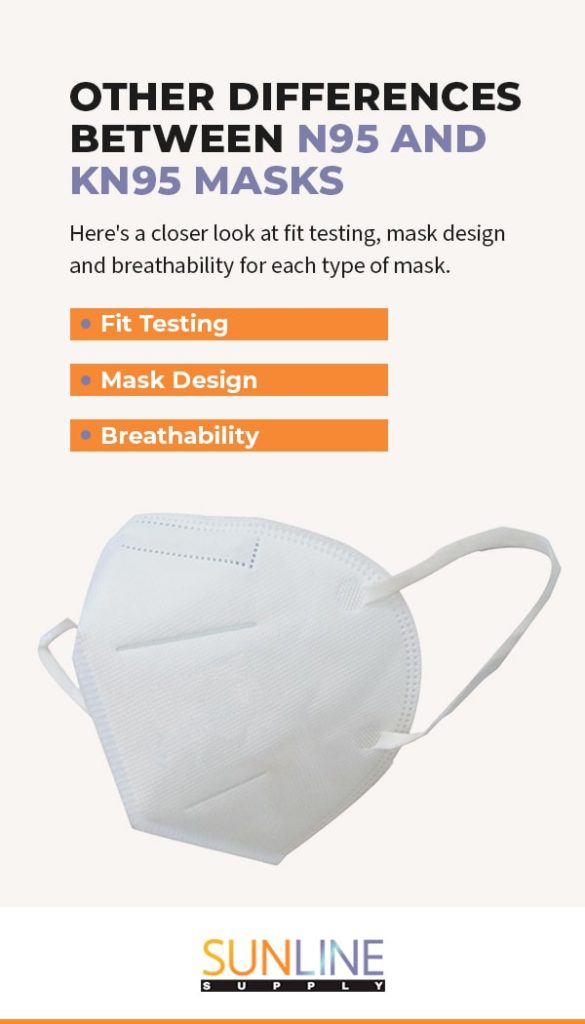
Other Differences Between N95 and KN95 Masks
While the primary difference lies in certification, there are also a few minor differences between N95 and KN95 masks. Here’s a closer look at fit testing, mask design and breathability for each type of mask.
Fit Testing
The Chinese government requires fit testing for the KN95s, while the CDC doesn’t do so for N95s. However, fit testing is strongly recommended in both healthcare and industrial settings. A fit test, which only takes 15-20 minutes, should be conducted when first wearing a fitted mask and again annually.
This brief test confirms the mask provides an appropriate seal and the individual wears it correctly. Usually, it involves putting the mask on and assessing whether the wearer can smell a specific scent or taste certain aerosol particles. If these particles have gotten through the mask, the wearer hasn’t passed the fit test, so they may need to adjust it or make other changes, such as selecting a different size or shaving facial hair.
Mask Design
There are many different styles of masks, many of which look similar. In general, the KN95 masks have loops that go around your ears, while the N95 has headbands that wrap around the head. KN95s have a tent-like shape with two creases on the front, while N95s are usually duckbill- or cup-shaped. Both options have the potential for discomfort after long periods of use and come in multiple sizes, such as small, medium and large.
Breathability
N95 respirators have slightly stricter requirements for the maximum drop in pressure during inhalation and exhalation. This feature helps them provide somewhat better breathability. KN95 masks have a maximum pressure drop of 350 pascals on inhalation and 250 pascals on exhalation, while N95s have a maximum inhalation pressure drop of 343 pascals and a maximum exhalation drop of 245 pascals. These slightly stricter requirements can make N95s more comfortable for long-term use or for wearers with respiratory difficulties.
Are KN95 Masks Authorized for Use in the US?
The short answer is yes, but not permanently. After the COVID-19 pandemic and the mask shortage that came with it, the FDA was looking for more options to make masks more attainable, especially in healthcare settings. At first, KN95s were not authorized. An emergency use authorization was issued for masks with similar authorization requirements from Australia, Brazil, Europe, Japan, Korea and Mexico.
Initially, KN95s weren’t included in this list of non-NIOSH-approved respirators because of concern over fraudulent masks. As the need for PPE grew, the FDA issued a new emergency use authorization for healthcare settings, allowing the use of non-NIOSH-approved respirators made in China as long as certain criteria proving authenticity were met.
KN95s were, and still are, prone to counterfeit products. The CDC has taken significant steps to improve the understanding of these items, including a comprehensive list of KN95s that have been tested under the International Assessment. Be sure to check the manufacturer list before purchasing KN95s and vet the seller carefully — sites with large amounts of third-party sellers like Amazon are especially prone to falsified listings.
At SUNLINE Supply, we only provide masks from sellers on this verified list, and our decades of experience in importing and distribution make us a dependable choice for PPE purchasing. If you have any questions about the authorization of our masks, we’ll be happy to answer them and provide the applicable details.
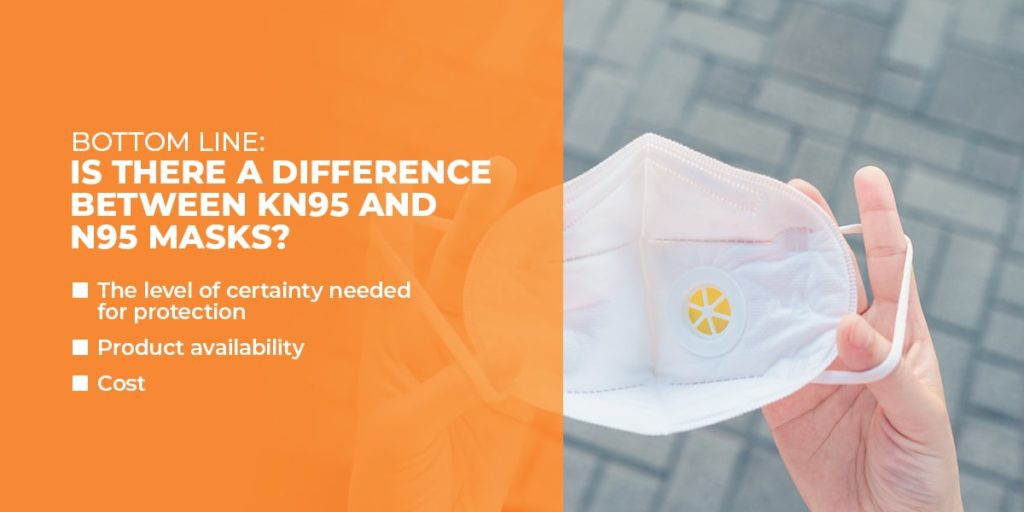
Bottom Line: Is There a Difference Between KN95 and N95 Masks?
Yes, but it’s subtle. For purchasers, the choice of whether to use KN95s or N95s will come down to a few different factors specific to the application. N95s are typically a slightly safer choice because of the U.S. regulatory agencies overseeing authorization. If you can avoid the threat of fraudulent masks, KN95s offer a type of similar performance.
Consider the following factors when purchasing masks:
- The level of certainty needed for protection: If you’re buying masks for use in sterile, high-risk applications, such as during medical procedures or working with hazardous chemicals, you may want N95s for more assurance. For situations with less risk, like visiting a grocery store or working with nuisance-level particles, the KN95s are likely suitable. If a person happens to wear a fake mask in that situation, the threat is less serious.
- Product availability: Depending on the state of manufacturing, one may be easier to get your hands on than another. KN95s were brought in to ease the mask shortage and aren’t nearly as hard to find as N95s. While production of N95s should eventually meet demand, they’re still in short supply. KN95s can be an easier solution if you’re finding it difficult to get N95s.
- Cost: While costs are fluctuating, N95s tend to be slightly more expensive than KN95s. If you’re on a tight budget and are OK with them, KN95s can be a more cost-effective choice.
Whichever you decide to use, it’s essential to work with reputable PPE suppliers. Purchasing from the wrong seller puts workers at significant risk for health hazards and could contribute to the spread of airborne infectious diseases. Whether you’re looking at N95 or KN95 respirators, there’s a chance for counterfeit products, especially with a short supply of this PPE. Make sure you’re performing your due diligence and carefully evaluating the reputability of both the product and seller when shopping for masks.
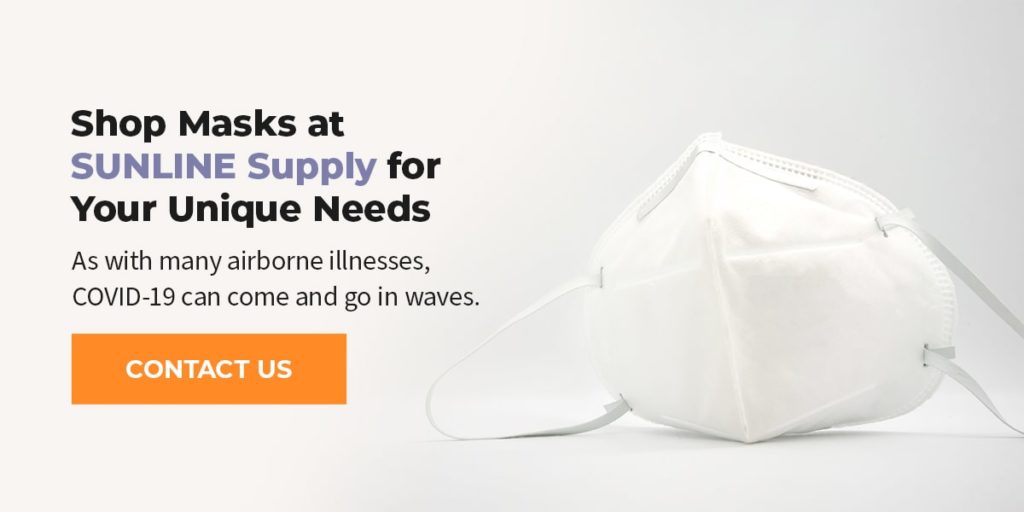
Shop Masks at SUNLINE Supply for Your Unique Needs
Here at SUNLINE Supply, certainty is front and center. We’re a company that only sources masks from reputable sellers, resulting in greater peace of mind for both buyers and users. Whether you’re looking for healthcare or industrial respirator masks, SUNLINE Supply can help you find exactly what you need.
As with many airborne illnesses, COVID-19 can come and go in waves. It isn’t likely to completely resolve any time soon, and staying prepared with PPE is the best way to be ready for it. Protect workers by ensuring you have a steady supply of reputable masks from SUNLINE Supply. With both KN95s and N95s in our catalog, we can deliver bulk respirators at affordable prices to schools, healthcare settings and businesses of all varieties. We also carry a wide range of other PPE, from gloves and hand sanitizer to goggles and gowns.
Browse our bulk selection of N95s and KN95s today to learn more about them, or reach out to us if you have any concerns or questions!
